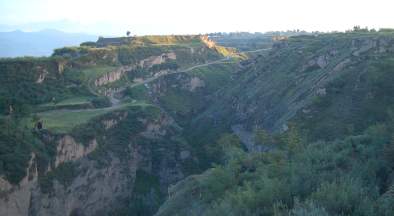Loess is the name for the silty sediment that has been deposited by wind storms on the plateau over the ages and it is a highly sensitive region with what has been called the "most highly erodible soil on earth".
The 100 participants exchanged views and had discussions on the issues of efficient use of water resources and ecological rehabilitation on the Yellow River Loess Plateau. The speakers also included representative from local level from Yima City who gave presentations about the important achievements they have made in recent years on water and soil conservation and ecological rehabilitation in these rapidly urbanising areas. After the presentations, a number of other participants joined the discussion with comments and recommendations put forward.
The participants also visited the water and soil conservation and water supply projects in Yima City and Jiyuan City and the 400MW Sanmenxia and 1,836 MW Xiaolangdi hydroelectric reservoirs on the Yellow River mainstream after the workshop. These projects provide significant benefits, not only in their hydropower generation capabilities, but for the flood protection provided in the lower reaches of the Yellow River. These projects are unique as they must cope with the highest sediment loads of major rivers worldwide in both annual sediment transport and mean sediment content.
In conjunction with the Workshop, the participants also took part in the activities related to the 60th Anniversary of the Yellow River Institute of Hydraulic Research (YRIHR) on Sept.26.

